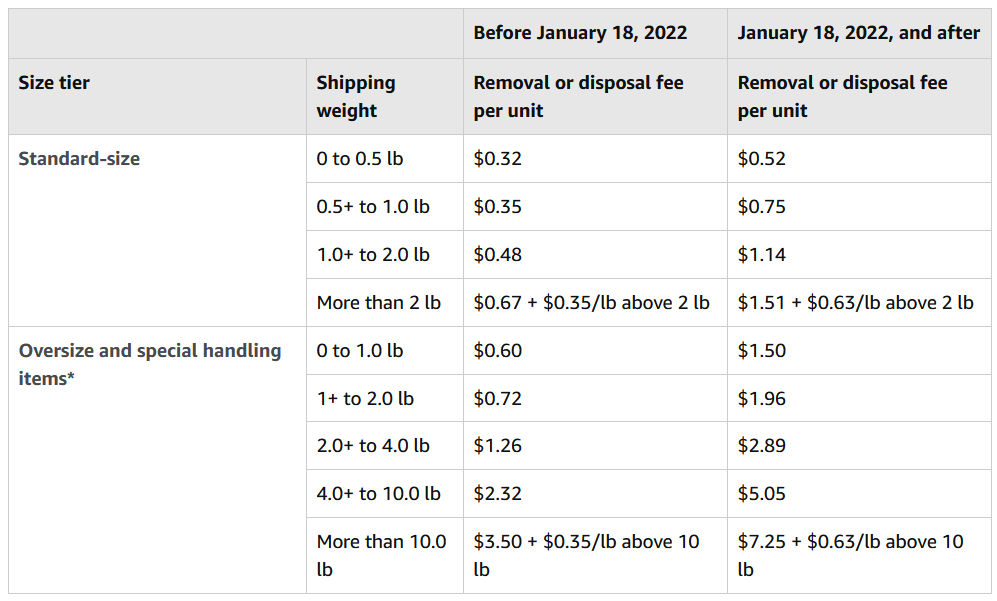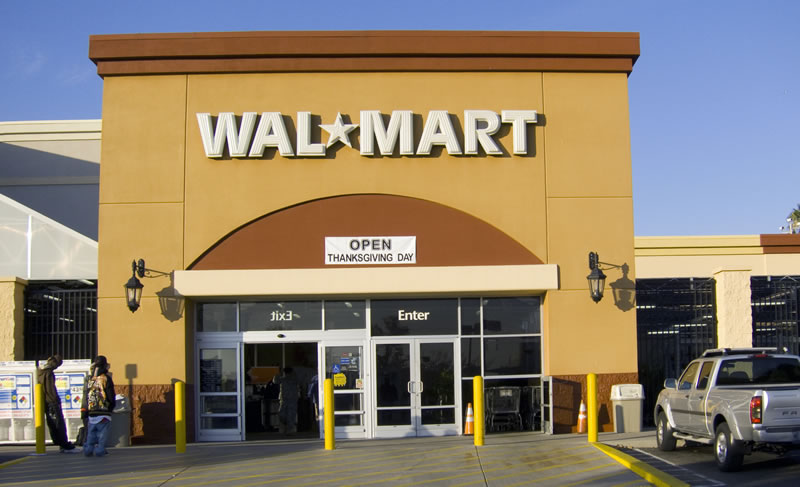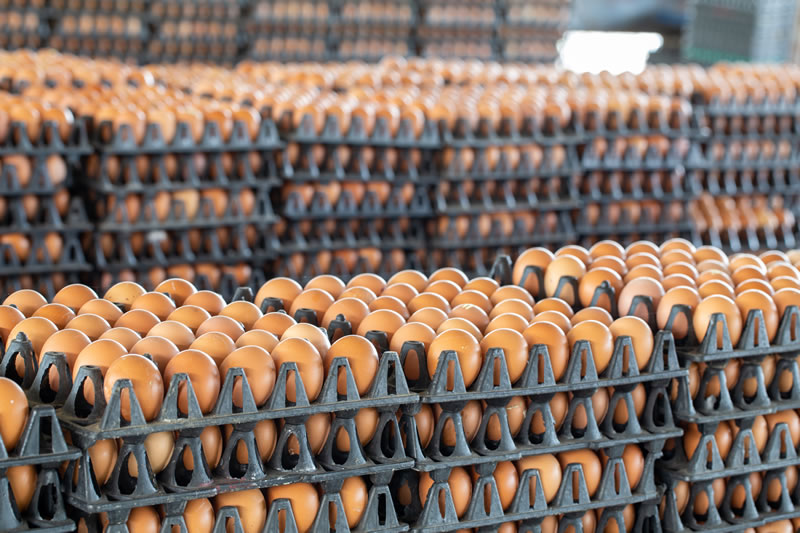The Web Retailer News Digest for November 19th, 2021
If you’ve been paying attention to the news lately, you’ve no doubt been hearing about both the spike in inflation and ongoing supply chain issues. Well, those chickens of economic dysfunction have come home to roost for Amazon sellers in the form of new referral and FBA fee increases for 2022.
In a somewhat surreal announcement on the Seller Central forum, Amazon spends several paragraphs patting itself on the back about capital improvements, wage increases and building new warehouses. It’s all for your benefit, they say.
But then the hammer drops – our costs have gone up, and now yours are going up too. For sellers, this means there will be notable increases in fees next year across five categories: referrals, fulfillment, small and light, removal and disposal orders, and storage fees.
While fee increases for referrals, fulfillment, and small and light will rise only incrementally, it’s the final two categories of removal and storage where costs are really skyrocketing. What does this mean for sellers, and what can they do about it?
These Amazon fees will double next year
Back in the “good old days” of FBA, storing your inventory in an Amazon facility was akin to cloud storage – you could stick a whole lot of products in there, and it didn’t cost that much per month. There were seasonal fee increases in Q4, but in general, sellers got a lot of storage for a relative pittance. Well, those salad days are long gone.
The cost of standard-size storage is up around 10%, but long-term storage (now called “aged inventory storage”) has a new tier of fees for items that remain in fulfillment centers for 271 to 365 days, coming in at $1.50 per cubic foot. The surcharge only kicked in after a year previously. This 90-day run-up to the 365 day+ fees (unchanged at $6.90 per cubic foot) seems designed to inflict a little extra pain on sellers before the main event.
Closely related to storage is the increase in removal and disposal fees, which have more than doubled in many cases. If your products aren’t selling, it’s going to cost you a lot more to have Amazon return them to you, or dispose of them.

One wonders if the removal and disposal order fee increases are, in part, designed to motivate sellers to use Amazon’s FBA Liquidations program, which we’ve covered before in this space.
Why are these particular fees being targeted with eye-watering increases? One educated guess: the surge in Amazon shopping due to the pandemic has put monthly storage space at a premium, even with 350 new fulfillment-related facilities opening up. It’s all about turning over that inventory quickly and making room for more – whether that’s yours or someone else’s. With that said, what can a savvy seller do to minimize their exposure?
The best answer is to double down on managing your inventory. First, identify any existing inventory issues and which of your ASINs may be subject to additional fees. Then try to eliminate them as quickly as possible, whether through offering discounts, disposal, the liquidation program, or whatever means is most cost-effective. This may even mean having the items returned and selling them on Amazon or elsewhere, but fulfilling the orders yourself instead of using FBA.
Next, proactively manage future inventory with an eye on storage fees. Having products trickle in might be better than big batch orders, so negotiate lower MOQs with your suppliers or use a 3PL to store your inventory before sending it into FBA.
Ultimately, like everything else these days, FBA prices are going up – and sellers need to get creative and proactive to get the most value for their efforts.
But the message from Amazon is clear, as succinctly stated in the Seller Forums by vurbanmx:
As a way of saying thank you for making us billions of dollars, we will now charge you even more fees, and provide less customer support. You’re welcome.
Read more at Amazon Seller Forums.
Amazon and Visa showdown over payment fees
In a battle of the titans that no one saw coming, Amazon and Visa are facing off over high transaction fees in the UK. The marketplace giant has announced it will stop accepting Visa credit cards for payment from January 19, 2022.
Amazon has even gone as far as offering customers gift cards of £20 ($27) for Prime members and £10 ($13.50) for non-Prime members to change their preferred payment method to another card.
Who’s at fault here? Well, you can blame Brexit. At least, that’s what Visa did, citing the UK’s departure from the EU as their reason to raise credit card transaction fees between the UK and EU from 0.3% to 1.5% – a move that provoked a serious backlash from the world’s biggest online retailer. Post-Brexit, the UK is no longer subject to an EU interchange fee cap, allowing card networks to hike their fees. Mastercard has recently raised its fees as well.
On the Amazon side of things, it’s quite a power play to push back against a global credit card company. While the goal is most likely to force Visa to lower its fees, Amazon seems to have calculated that customers can and will be willing to pay another way to keep shopping on the marketplace.
Most retailers would not be willing to turn away potential customers like this. However, Amazon has a unique position in the UK and globally at this point. This also may be a preemptive strike against one major credit card company to send a message to the rest, in the face of globally rising card transaction fees.
For sellers, the impact of this showdown is likely to be minor. It will probably be settled by the deadline, simply because there’s so much money at stake. But it does show that Amazon is willing to throw its weight around against major global financial players. Perhaps there could be blowback later in the form of more regulatory oversight, or other unintended consequences.
Read more at Business Insider.
Walmart fulfillment hits 25% of marketplace sales

In a sign that Walmart is beginning to slowly gain momentum in its quest to catch up to Amazon, it announced that 25% of its marketplace sales are being fulfilled by WFS. The in-house fulfillment service reached this key metric in only 20 months, an impressive start to say the least. This is especially true considering the infrastructure required to set up such a logistics and fulfillment system on a level like Amazon FBA.
Walmart has been aided in its accelerated fulfillment growth by its nationwide brick-and-mortar presence and associated warehouses, as well as a large influx of Chinese manufacturers to the marketplace. What it signifies is more interesting: Walmart hit 25% self-fulfillment in 20 months, while Amazon FBA is at 75% fulfillment in 15 years.
For sellers, this shows that Walmart is growing quicker than expected. While it still has a way to go to hit Amazon-like levels, WFS may soon be a viable competitor – and an even more attractive option for sellers who are looking to diversify their channels.
Read more at Marketplace Pulse.
Also in the news
- eBay asks sellers to sign a petition against the EU Digital Services Act. eBay Community.
- eBay Korea’s sale to Emart has been completed. eBay.
- Amazon “upstream storage” beta offers bulk storage to feed FBA. eCommerce Bytes.
- Multi-marketplace Sponsored Product ads now available (UK). Amazon Seller Forums.
- Fee reductions for Customer Service by Amazon. Amazon Seller Forums.
Webinars in the week ahead
For everyone
Various dates: Amazon advertising’s global webinar program rolls on with 20+ webinars scheduled, covering Sponsored Products, Sponsored Brands, reporting, optimization and tips. Amazon.
For US sellers
Various dates: Amazon Small Business Academy Pathways series. Amazon.
And finally…
Alibaba gives away 500,000 eggs to encourage recycling
And finally, we wish you a belated, but Happy Singles Day!
Don’t know what we’re talking about? Then you definitely don’t live in China or Southeast Asia, where Singles Day is like Black Friday and Cyber Monday rolled into one. It’s a massive eleven-day sales holiday ending on November 11 (11 days, November 11, Single = 1 — get it now?).
The holiday was ostensibly founded to celebrate the large number of bachelors prevalent in Chinese culture as a result of government birthing policies. Today, however, it’s celebrated by both sexes and everyone who likes to shop for a deal.
Singles Day has grown to become the world’s largest offline and online shopping event. Alibaba, China’s largest online commerce company, sold $84.54 billion of products this year, while fellow online retailing giant JD pulled in $54.6 billion.
Alibaba’s logistics arm, Cainiao, set up 13,000 recycling centers just for this year’s Singles Day. Recycling isn’t a common practice in China, but a steady stream of people were seen coming into these centers, and they weren’t necessarily coming in to be socially responsible.
No, they were coming in for the special recycling incentive: for every cardboard box you bring in, you get a free egg. That’s right, one egg per box. And there were 500,000 free eggs ready for this promotion.

Like you, we have many, many questions. Why eggs? Do you get a carton after 12 eggs, or do they just give you back one of your boxes… but then you have to give back an egg? Or are people just filling their pockets with eggs?
What’s so attractive about free eggs anyway? Is there an egg shortage in China? Or do people just really, really like eggs? Why 500,000 eggs and not 111,111 eggs?
We did some digging, and discovered this little nugget: in many cultures, eggs have a specific symbolic meaning, and China is no exception. The Chinese consider eggs to be a symbol of fertility. Parents may throw a “red egg and ginger celebration” after the baby is born, and they dish out hard-boiled eggs to announce the birth.
So, it’s Singles Day, and the promotion is a free egg that symbolizes fertility? Sounds like there might be a few less shoppers on Singles Day next year if things go eggs-actly as planned.
Look, we’re not hard-boiled cynics, but sometimes you need to look at things like this and wonder just what the shell were they thinking?
Read more at CNBC.

Leave a Reply